These Halifax residents lost their driveways in the July floods. They're still waiting for repairs
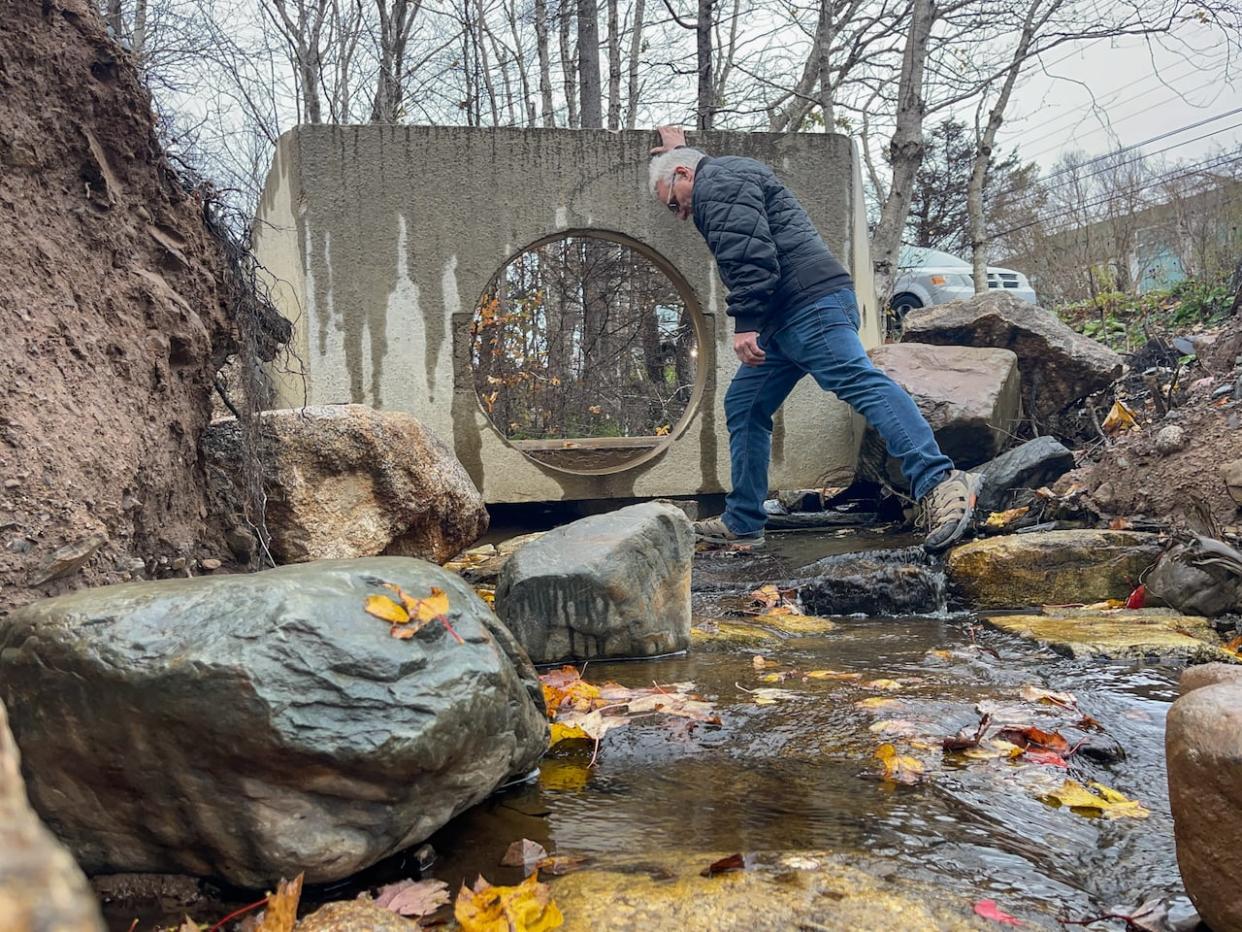
Every day, Peter Dominey scales a steep, rocky drop where his driveway once was and hops across a brook.
It's been more than three months since Dominey's culvert washed away in the historic July flooding that hit parts of Nova Scotia, leaving a large gap in the driveway and making it impassable by car.
Since then, the Hammonds Plains resident and his 9-year-old son have been navigating the gap on foot while waiting for a replacement.
"It's taken over our life. I don't know how else to say it," Dominey said Monday.
"I've been patient, I think but the patience [is] wearing thin. I'm at the point of frustration and exasperation."
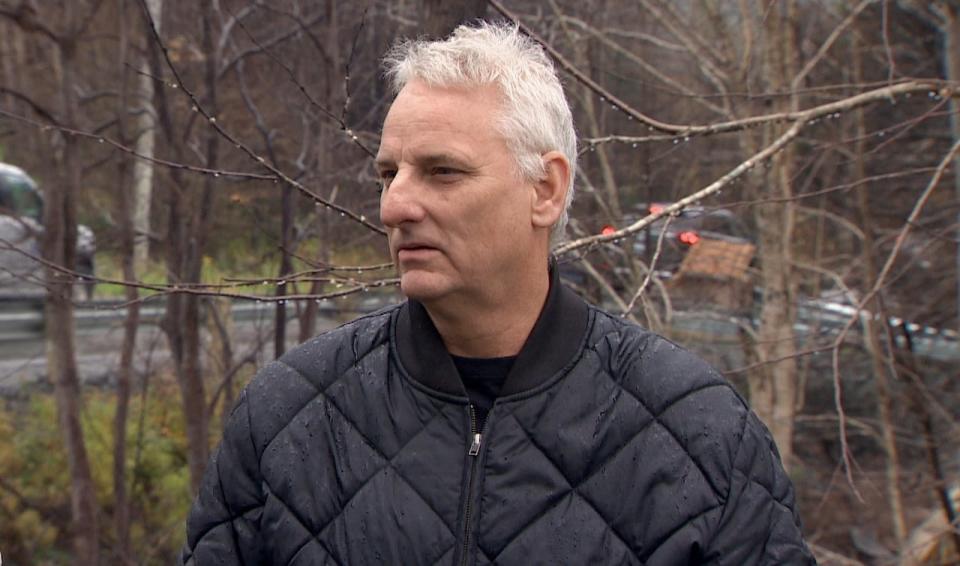
Dominey has been waiting for more than three months for a culvert replacement, and has been navigating the large gap in his driveway on foot in the meantime. (CBC)
Dominey's neighbourhood on Yankeetown Road was also one of the most impacted by the May wildfire that began in Upper Tantallon. His culvert originally melted in the blaze. HRM put in a new one right away, but then the July flood washed that one away.
The driveway issue has also caused a delay in repairing the melted siding and roof on Dominey's home. As the days get colder, he's worried about heating since an oil truck can't access his house. An ambulance or fire truck would also be stuck on the road if there was an emergency.
It took weeks to get a clear answer about whose responsibility the culvert was, he said. Halifax Water eventually told him it was his responsibility because the culvert is on his land.
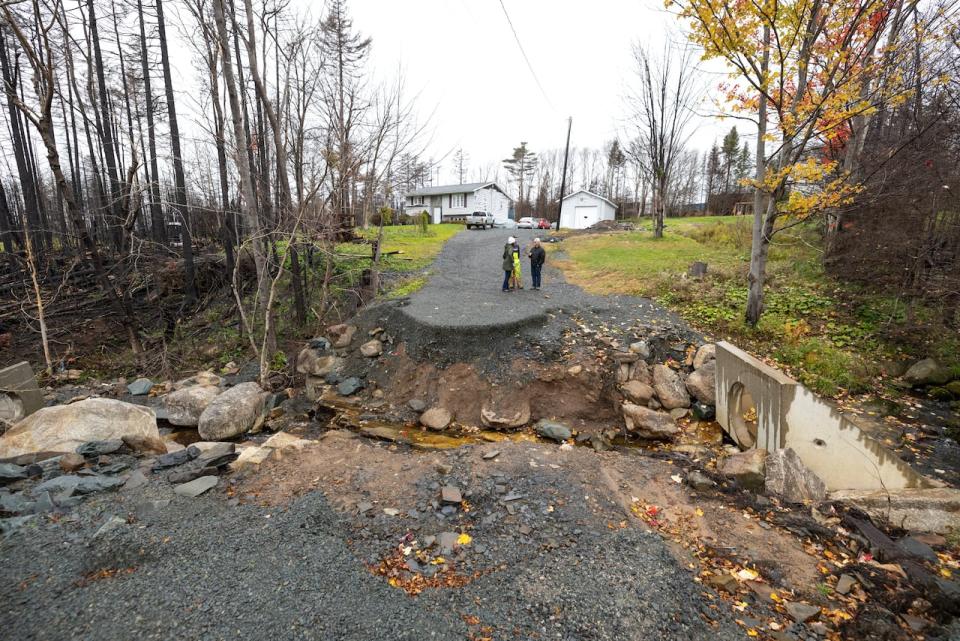
Dominey's driveway was badly damaged in July's flooding. (Rob Short/CBC)
"When they send me a bill for this ditch, do they not take ownership of this water as being public water? I mean, they bill me for it. So does that not represent that's their responsibility?" Dominey said.
The Halifax Regional Municipality has replaced the culvert in the past, Dominey said, once about 10 years ago and after the wildfire. He added that staff at the municipality have been empathetic and helpful so far, but they appear to be running into red tape and provincial regulations.
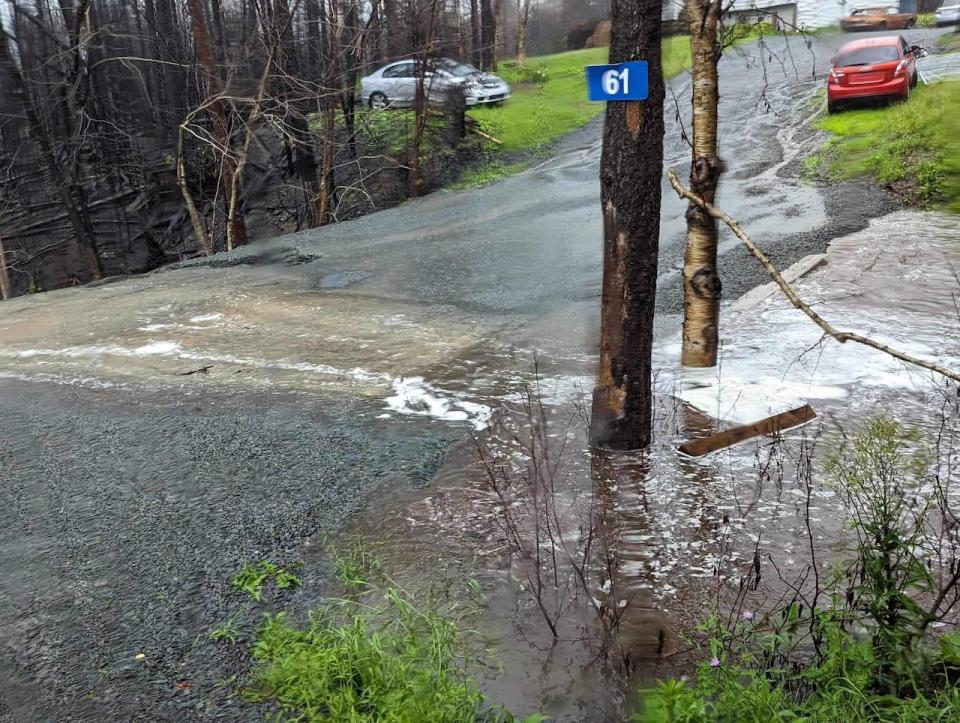
Peter Dominey's driveway flooded in July's heavy rains. (Peter Dominey)
"There's been a culvert here 33 years. I don't see why it takes three and half months to decide what needs to be put back in here," Dominey said.
Next door, Brandon MacLeod is dealing with the same situation, although in his case the culvert delay has meant waiting to go home at all.
MacLeod's family house was destroyed in the wildfire, so he, his wife, two adult sons and granddaughter are renting elsewhere for now.
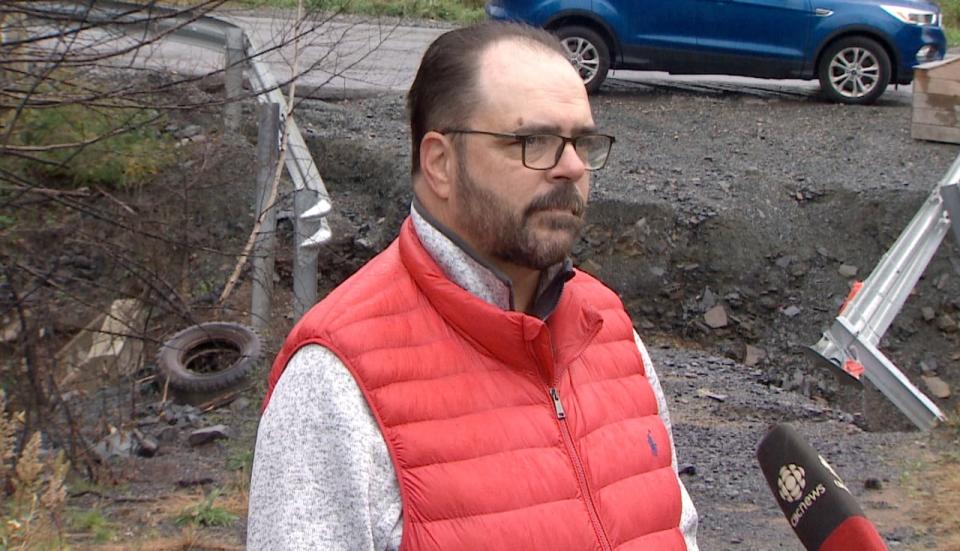
Brandon MacLeod has also been waiting for months for his culvert to be replaced so work to rebuild his home can finally begin. (CBC)
But MacLeod said they have building permits in hand and a contractor ready to go. He also said he's facing a "time crunch" because rebuilding his home will get much more expensive if the ground freezes before concrete is poured.
"The prospect of building our new home has been what's been keeping us going," he said. "The quicker we can get this done, the quicker we can all get back to our lives."
Both neighbours considered hiring their own contractors to install temporary bridges to access their land, but said they were worried about the cost and whether the ground was stable enough.
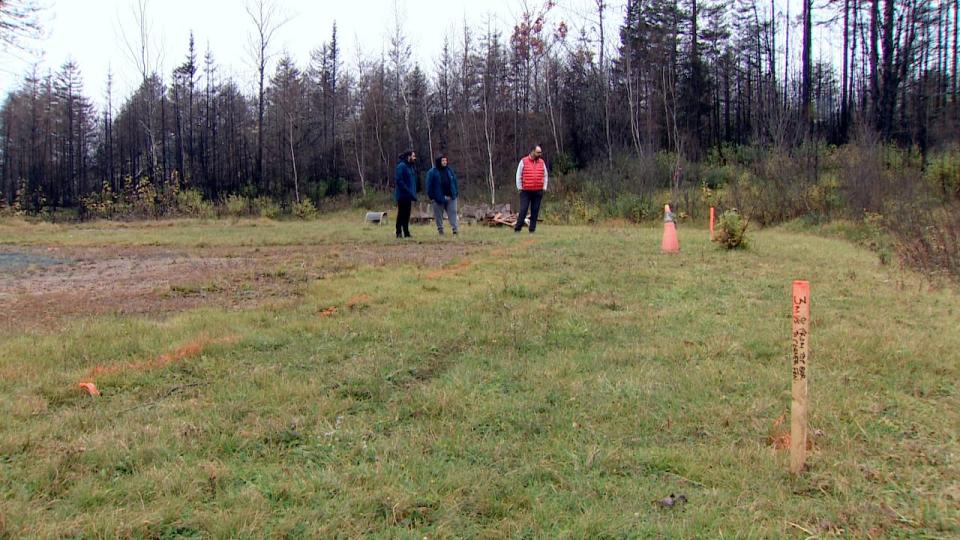
MacLeod (right) and his sons Connor and Nathan MacLeod walk the property on Yankeetown Road in Hammonds Plains where their home once stood. (CBC)
Jake Fulton, a spokesperson for Halifax Water, said in an email that both culverts are beyond the road right-of-way on private property, and so "are not part of Halifax Water's stormwater infrastructure and are not our responsibility."
He said that as a regulated utility that runs on payments from customers, Halifax Water can only maintain systems within their mandate that are part of their stormwater system.
On Monday morning, both MacLeod and Dominey watched as a stream of traffic drove past their properties due to a detour, as crews replace a culvert on Hammonds Plains Road that was damaged in the July flooding.
"It's a little bit of a slap in the face to be honest," said MacLeod, although he recognizes that work is for a busy public road.
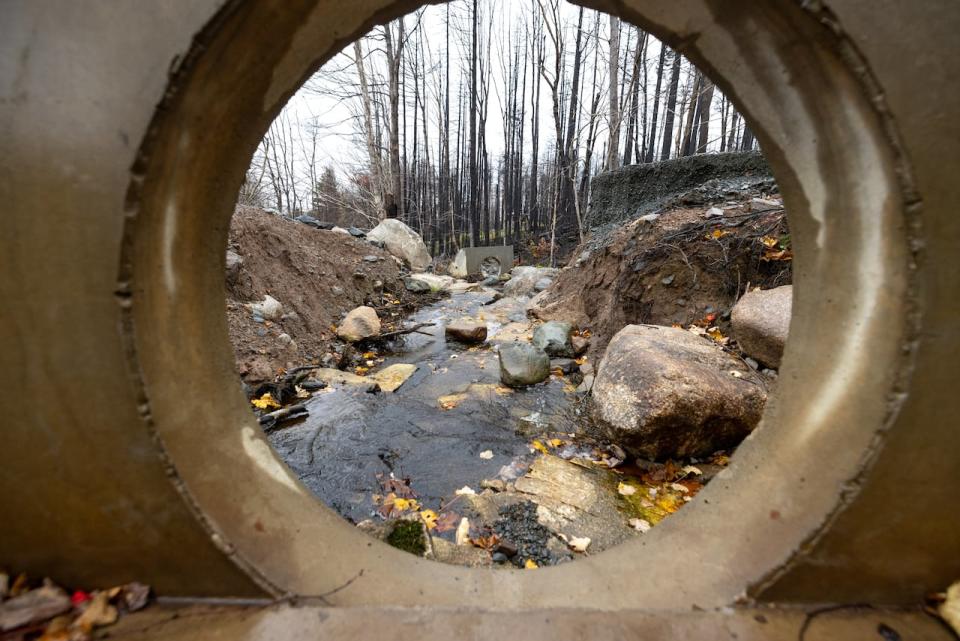
The view of flooding damage on Dominey's driveway as seen through a concrete headwall that used to be part of a culvert. (Rob Short/CBC)
A spokesperson for the municipality confirmed that they have agreed to replace the culverts for both driveways, although the property owners will be responsible for them going forward.
Laura Wright said the municipality had replaced the culverts this summer while a local state of emergency was in place due to the wildfires. Since that measure has since been lifted, the repair work now requires a watercourse alteration application to Nova Scotia's Environment and Climate Change department.
Wright said that step has only recently been approved by both the province and the property owners. Detailed design of the new culverts is underway, Wright said, and the repairs should be completed by the end of November.
MORE TOP STORIES


